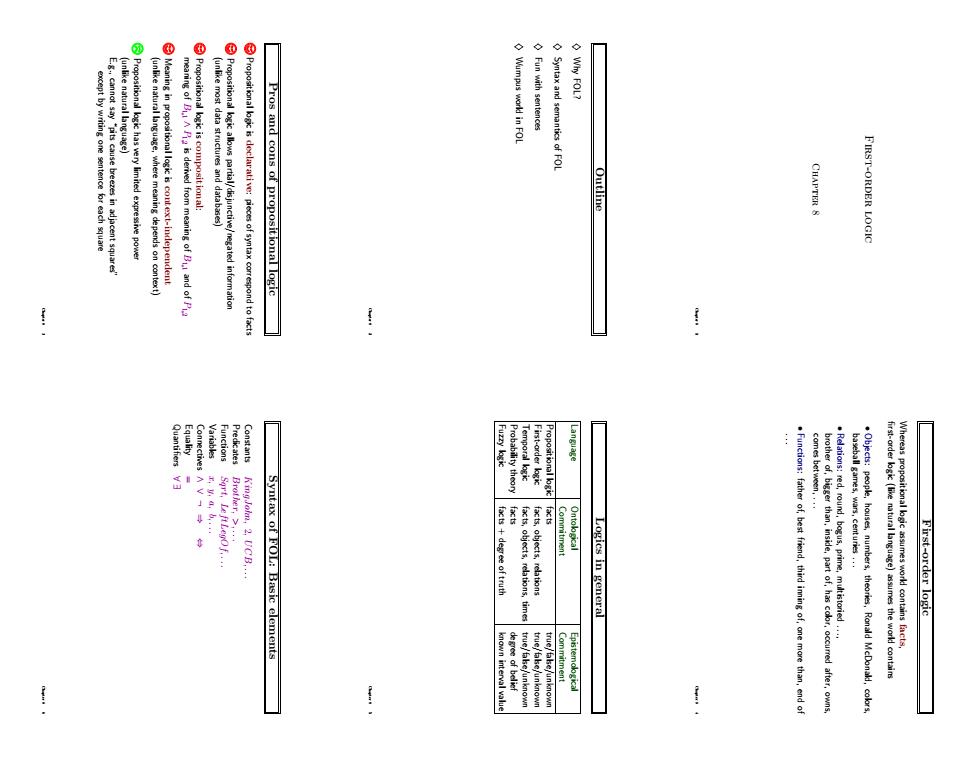正在加载图片...

nlike natural lang Why FOL? (unlike natural language,where meaning depends on context) Meaning in propositional logic is context-independent Pros and cons of propositional logic Wumpus work in FOL Fun with sentences Syntax and semantics of FO Outline CHAPTER S FIRST-ORDER LOGK irst-ordergic Language ↓ Syntax of FOL:Basic elements Logics in general First-order logic Hu/s tru .Functions:father of best friend,third inning ofne more than,end of First-order logic Chapter 8 Chapter 8 1 Outline ♦ Why FOL? ♦ Syntax and semantics of FOL ♦ Fun with sentences ♦ Wumpus world in FOL Chapter 8 2 Pros and cons of propositional logic Propositional logic is declarative: pieces of syntax correspond to facts Propositional logic allows partial/disjunctive/negated information (unlike most data structures and databases) Propositional logic is compositional: meaning of B1,1 ∧ P1,2 is derived from meaning of B1,1 and of P1,2 Meaning in propositional logic is context-independent (unlike natural language, where meaning depends on context) Propositional logic has very limited expressive power (unlike natural language) E.g., cannot say “pits cause breezes in adjacent squares” except by writing one sentence for each square Chapter 8 3 First-order logic Whereas propositional logic assumes world contains facts, first-order logic (like natural language) assumes the world contains • Objects: people, houses, numbers, theories, Ronald McDonald, colors, baseball games, wars, centuries . . . • Relations: red, round, bogus, prime, multistoried . . ., brother of, bigger than, inside, part of, has color, occurred after, owns, comes between, . . . • Functions: father of, best friend, third inning of, one more than, end of . . . Chapter 8 4 Logics in general Language Ontological Epistemological Commitment Commitment Propositional logic facts true/false/unknown First-order logic facts, objects, relations true/false/unknown Temporal logic facts, objects, relations, times true/false/unknown Probability theory facts degree of belief Fuzzy logic facts + degree of truth known interval value Chapter 8 5 Syntax of FOL: Basic elements Constants KingJohn, 2, UCB, . . . Predicates Brother, >, . . . Functions Sqrt, LeftLegOf, . . . Variables x, y, a, b, . . . Connectives ∧ ∨ ¬ ⇒ ⇔ Equality = Quantifiers ∀ ∃ Chapter 8 6